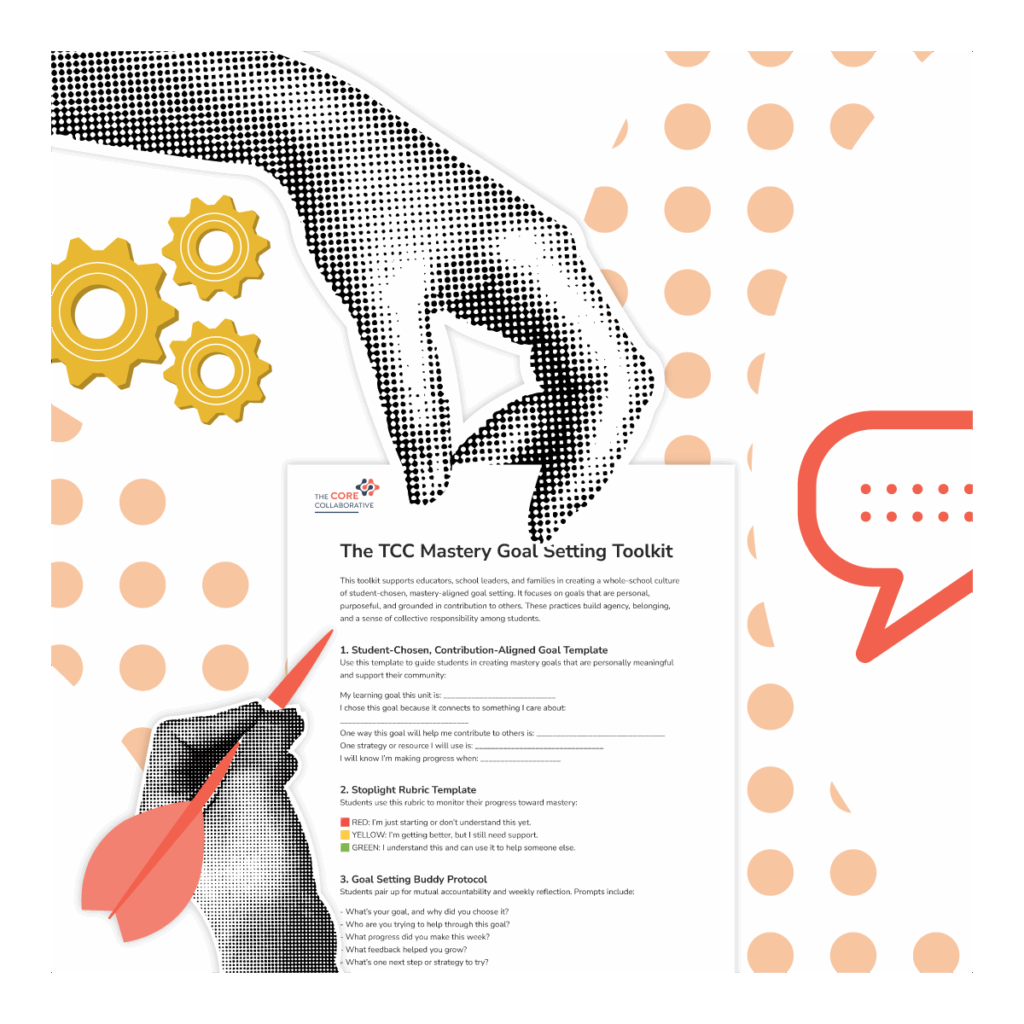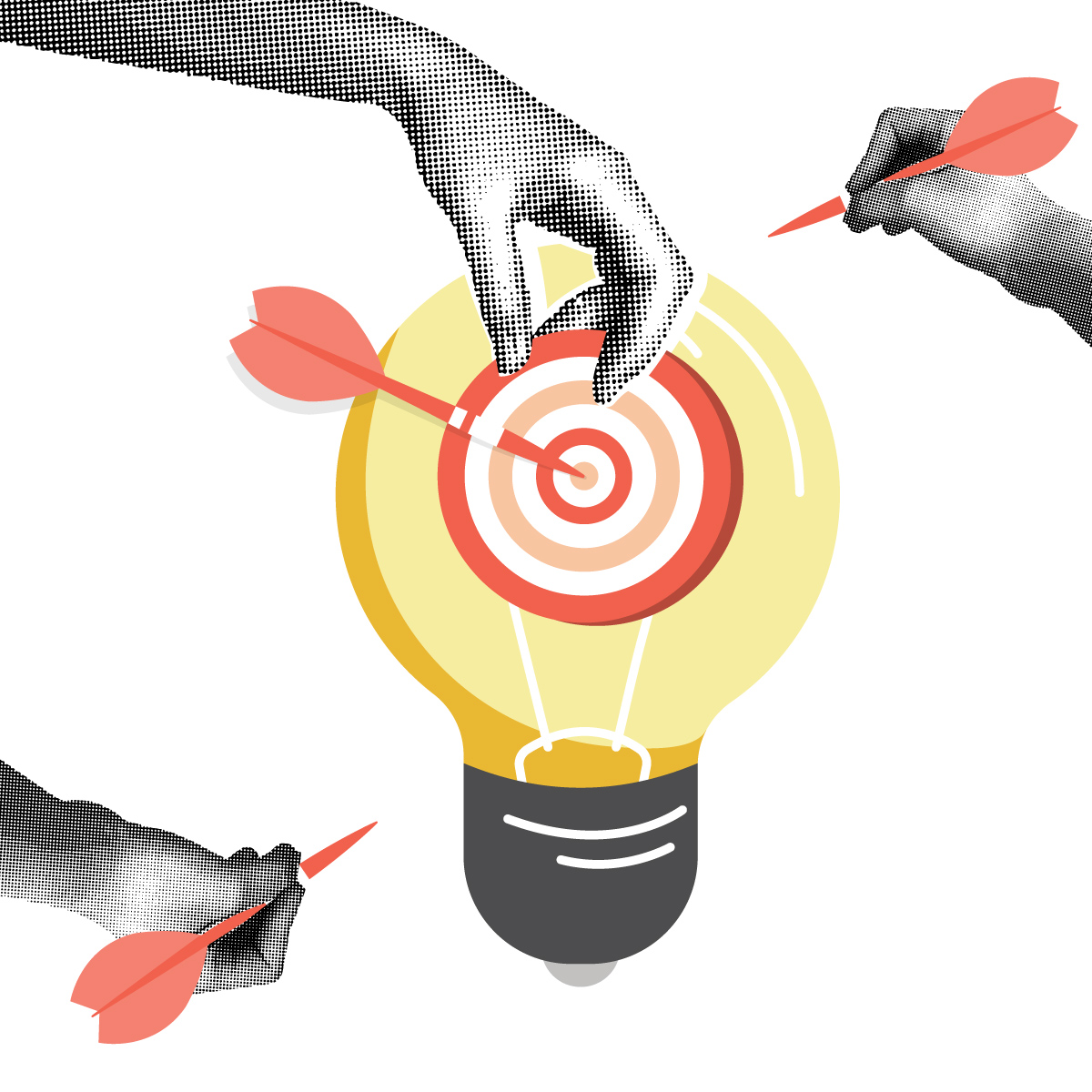Imagine a school where every student—from kindergarten to twelfth grade—can name what they’re learning, why it matters to them, and how it will help them contribute to others. In this kind of school, goal setting is not a compliance activity. It’s a collective commitment to growth, identity, and service. Students don’t just work to get smarter—they work to make a difference.
That’s the power of a whole-school movement for mastery-aligned, student-chosen, contribution-oriented goal setting—anchored in equity, research, and the idea that we learn best when we learn for each other.
The Shift: From Points to Purpose, From Self to Service
Traditional goal setting often stops at personal achievement. “Get better at reading.” “Raise your math score.” “Improve your grade.”
But when students choose their own goals—goals rooted in their interests, growth needs, and desire to contribute—learning transforms. Goals become personal, relational, and impactful.
- Instead of “I want to do better in writing,” a student might say: “I want to write strong opinion pieces because I care about stopping bullying at our school.”
- “I want to get better at explaining my math thinking so I can help my group during projects.”
These are the kinds of goals that build agency, belonging, and a sense of collective responsibility.
The Research Behind Student-Led, Contribution-Oriented Goals
According to John Hattie’s Visible Learning, some of the most powerful strategies to impact learning include:
- Self-reported grades and expectations – Effect size: 1.33
- Goal setting – Effect size: 0.68
- Self-evaluation and reflection – Effect size: 0.75
But these strategies reach their full potential when they’re paired with relevance and social purpose. When students see that their learning can serve others, motivation deepens, and metacognition becomes communal.
“Students become assessment-capable learners when they know where they are going, how they are going, and where to next.” — John Hattie
Why This is Culturally Responsive and Asset-Based
Culturally responsive education honors identity, voice, and community. Student-chosen, contribution-oriented goals do just that:
- Affirm identity: Students set goals based on their interests, values, and lived experience.
- Build voice: Sharing goals in circles and assemblies gives students power and visibility.
- Promote contribution: Students see themselves not as passive receivers of knowledge, but as changemakers, peer mentors, family helpers, and community leaders.
“When students see themselves in their learning, they begin to understand their power.”
— Gholdy Muhammad
A Rhythm for Whole-School Growth and Contribution
What if every student goal was rooted in purpose and every classroom became a space where personal growth sparked community impact? This whole-school rhythm weaves together student agency, formative assessment, and collective celebration. From classroom goal buddies to community circles and family conversations, it invites students to not only master academic skills but to use them in service of others. Here’s how it unfolds across a school year:
1 Before Each Unit: Students Choose Purpose-Driven Goals
- Teachers share unit learning goals and screener-informed focus areas.
- Students choose a mastery goal that connects to a personal growth area and a way they want to contribute.
- “I want to improve in reading informational text so I can explain health topics to my younger brother.”
- “I want to get better at public speaking so I can lead our school recycling campaign.”
- Students are paired with a goal setting buddy to support and reflect with throughout the unit.
2 Principal-Led Goal Setting Assemblies
Each month begins with a 15–20 minute assembly that centers on contribution:
- Highlights of student impact from previous units
- Students sharing new goals and why they matter
- Recognition of perseverance and progress
- Principal message: “Learning isn’t just for us, it’s for our communities.”
3 During the Unit: Monitor Growth and Connection
- Students use Stoplight Rubrics to track progress toward their mastery goal.
- Daily reflections ask:
- “What am I learning that helps me help others?”
- “How have I used my goal to make a difference this week?”
- “Who might benefit from my growth?”
- Goal buddies check in weekly to share stories of progress and purpose.
4 Mid-Unit Community Circles: Learning in Service
- Weekly or biweekly community circles prompt reflection:
- “What inspired your goal?”
- “Who are you trying to help or impact?”
- “What do you need from our community to keep going?”
These circles elevate goals beyond the self—making learning a shared endeavor.
5 End-of-Unit Mastery + Contribution Showcase
Students self-assess and share their mastery evidence and how it made a difference:
- “Here’s my persuasive writing—and here’s the action it led to.”
- “Here’s how I used my new math skill to tutor someone in class.”
Classrooms host Celebrations of Learning and Contribution, spotlighting the why behind the growth.
Family Partnership: The “Mastery & Purpose Minute”
Families receive a newsletter for each unit with:
- Sample student goals and stories of contribution
- Sentence stems to prompt discussion at home:
- “What’s your goal, and why did you choose it?”
- “Who will benefit from your learning?”
- “What are you proud of so far?”
Family Innovation Idea: A Goal and Gratitude Wall in the lobby, where students and caregivers post personal goals and notes of appreciation to each other for their support.
Final Thought: We Learn Best When We Learn for Each Other
This is more than goal setting. This is identity work. This is equity work. This is community building. When students choose goals that matter to them and connect to helping others, they don’t just grow in skills. They grow in empathy, confidence, and a sense of purpose.
So let’s build schools where students say:
- “Here’s what I’m learning.”
- “Here’s why it matters to me.”
- “Here’s how it’s helping someone else.”
That’s how we measure success. Join the Impact Team Movement and build a culture of goal setting in your school!

Download the Mastery Goal Setting Toolkit, featuring:
- Contribution-aligned goal templates
- Culturally responsive stoplight rubrics
- Goal buddy protocols
- Principal assembly scripts
- Family newsletters
- Community circle prompts
Let’s create schools where mastery isn’t just about what we know—it’s about who we lift up!
References
- Bloomberg, P. J. (in press). Leading Impact Teams: Building a Culture of Efficacy and Agency. Mimi & Todd Press.
- Hattie, J. (2009). Visible learning: A synthesis of over 800 meta-analyses relating to achievement. Routledge.
- Hattie, J., & Zierer, K. (2018). 10 mindframes for visible learning: Teaching for success. Routledge.
- Muhammad, G. (2020). Cultivating genius: An equity framework for culturally and historically responsive literacy. Scholastic.
- Tomlinson, C. A. (2014). The differentiated classroom: Responding to the needs of all learners (2nd ed.). ASCD.
- Wiliam, D. (2011). Embedded formative assessment. Solution Tree Press.
- Zaretta, H. (2015). Culturally responsive teaching and the brain: Promoting authentic engagement and rigor among culturally and linguistically diverse students. Corwin.



